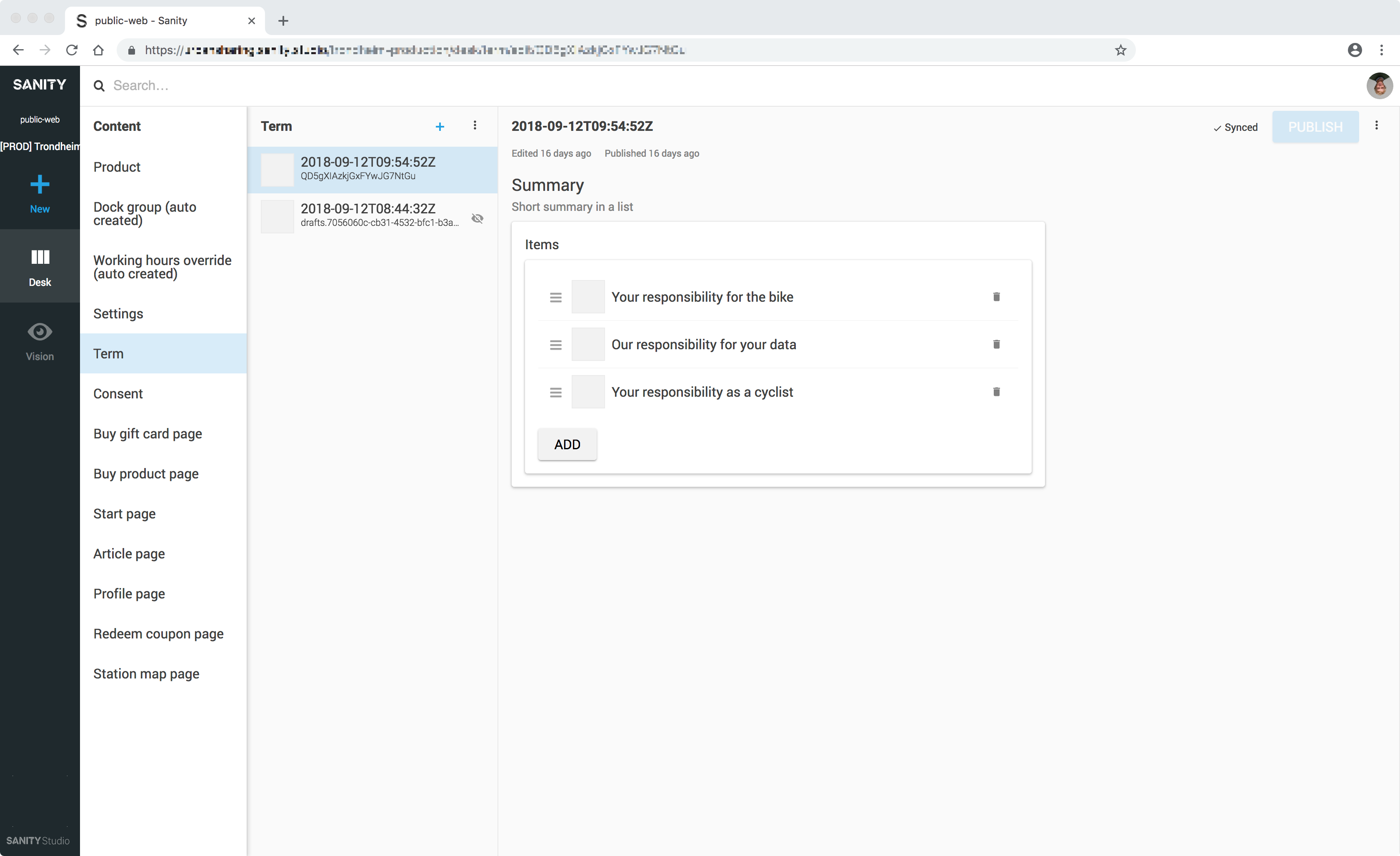User stories: Urban Sharing
Urban Sharing is a software platform for forward-thinking mobility solutions. They use Sanity to support their software platform that powers world-class bike sharing systems.

Knut Melvær
Head of Developer Community and Education
Published
Urban Sharing is a startup specializing in urban mobility. They have in a short time successfully rolled out their bike sharing in three major Norwegian cities, and earlier this fall they rolled out their bikes in Edinburgh, Scotland.
The core of Urban Sharing is the software platform that allows them to manage a fleet of bicycles efficiently, real-time data from every bicycle and machine learning models help them find patterns and predictability in how the fleet works from time to time. The fleet management system, developed in-house, doesn't require the fleet to be bicycles either, it can be adapted to any mobile vehicle. It's cloud-based, and communicates with clients in apps, the bicycles, and their racks, and of course, a webpage.
Urban Sharing was an early user of Sanity, and has been using it in production since spring 2017. We talked with Geir Arne Bruvik, Chief Product Manager:
– You were pretty early adopters and decided to use Sanity as part of your infrastructure, why was that?
We knew we needed some system to manage the localized content that we need to describe our services and data. We were going to display this content to multiple stateless clients, so we knew we needed a headless CMS. We have some experience with other headless CMS providers but found that they were too much in “the article and post” world to be a good fit for us.
Some of us knew the Sanity founders as the most skillful people around and was very intrigued when we heard that they were making what we needed.
– Could you tell us a bit about how you use Sanity?
We have some traditional CMS needs, in the form of article publishing and management of website navigation. But I guess the most interesting part is the small chunks of localized text we use to for instance describe our bike sharing plans and subscriptions. We edit those text blocks in our own admin system, but store them in Sanity. We then display the texts in our web sites, our Android and iOS apps, and in our kiosk software.

– Are there any real alternatives to Sanity for your usecase?
We could make a CMS ourself. Which should be avoided when if you can.
– You have made your own fleet management system, which today is used for the bike sharing initiatives in Oslo, Bergen, Trondheim, and Edinburgh. Could you tell us a bit more about how you have integrated Sanity?
Our end user clients talks GraphQL, and our GraphQL resolver translates those requests to Sanity's GROQ API, and bundles that up with data from our system. This way Sanity is invisible for our clients, and the integration itself is pretty smooth in our NodeJS environment.
– What do you hope to do with Sanity in the future?
The bike sharing services supported by our systems employ quite a few people. They need to access documentation about the hardware and software that make up the service. We believe that this documentation should be in-line and adapted to what and where they are working, so a natural step for us would be to use Sanity for internal purposes like that.